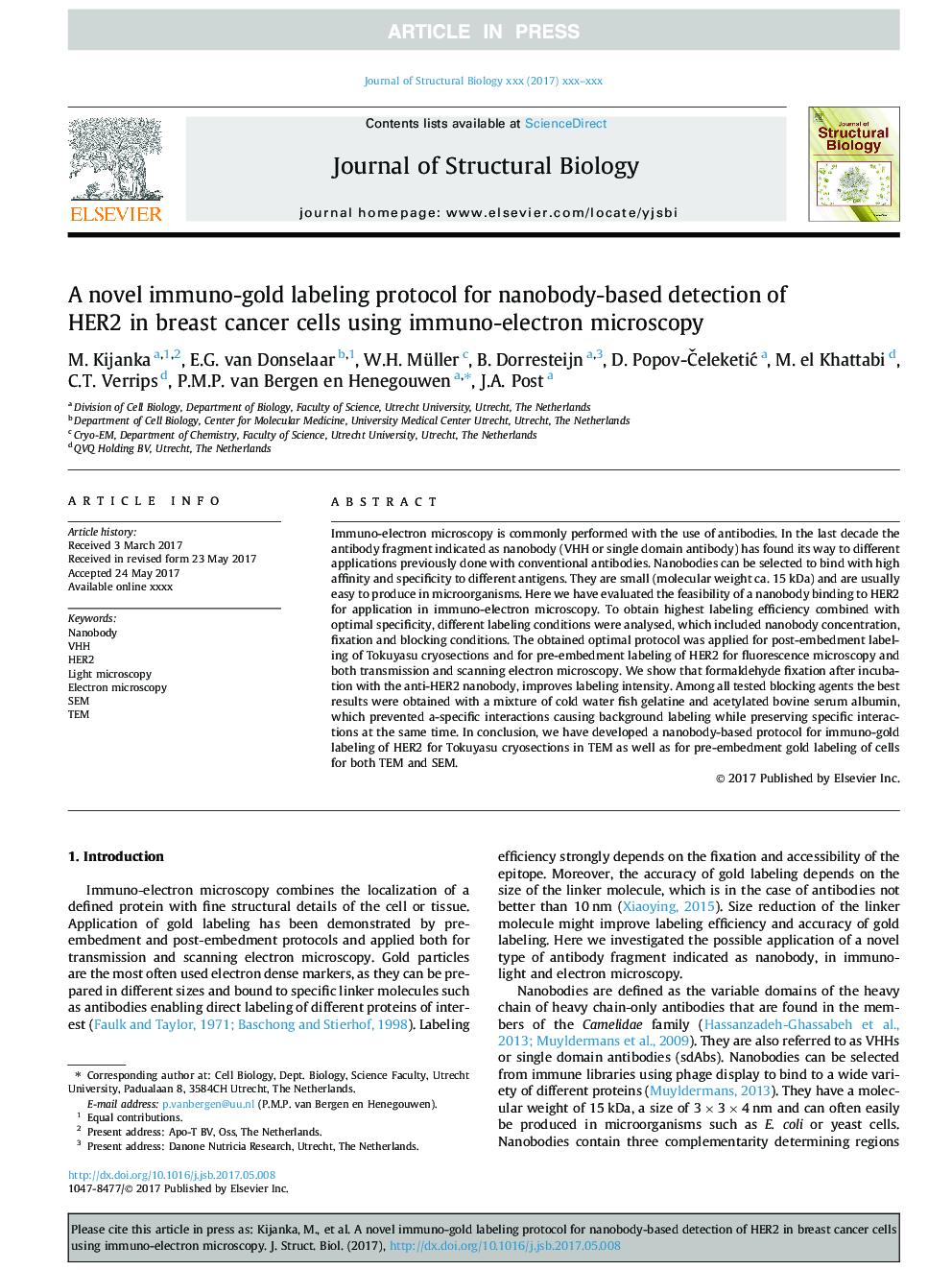| Article ID | Journal | Published Year | Pages | File Type |
|---|---|---|---|---|
| 5591520 | Journal of Structural Biology | 2017 | 11 Pages |
Abstract
Immuno-electron microscopy is commonly performed with the use of antibodies. In the last decade the antibody fragment indicated as nanobody (VHH or single domain antibody) has found its way to different applications previously done with conventional antibodies. Nanobodies can be selected to bind with high affinity and specificity to different antigens. They are small (molecular weight ca. 15Â kDa) and are usually easy to produce in microorganisms. Here we have evaluated the feasibility of a nanobody binding to HER2 for application in immuno-electron microscopy. To obtain highest labeling efficiency combined with optimal specificity, different labeling conditions were analysed, which included nanobody concentration, fixation and blocking conditions. The obtained optimal protocol was applied for post-embedment labeling of Tokuyasu cryosections and for pre-embedment labeling of HER2 for fluorescence microscopy and both transmission and scanning electron microscopy. We show that formaldehyde fixation after incubation with the anti-HER2 nanobody, improves labeling intensity. Among all tested blocking agents the best results were obtained with a mixture of cold water fish gelatine and acetylated bovine serum albumin, which prevented a-specific interactions causing background labeling while preserving specific interactions at the same time. In conclusion, we have developed a nanobody-based protocol for immuno-gold labeling of HER2 for Tokuyasu cryosections in TEM as well as for pre-embedment gold labeling of cells for both TEM and SEM.
Related Topics
Life Sciences
Biochemistry, Genetics and Molecular Biology
Molecular Biology
Authors
M. Kijanka, E.G. van Donselaar, W.H. Müller, B. Dorresteijn, D. Popov-ÄeleketiÄ, M. el Khattabi, C.T. Verrips, P.M.P. van Bergen en Henegouwen, J.A. Post,
